
Why do the writers at Singletracks review so many tires and write up every bit of tire tech news they receive? Because tires are one of the most important components on a bike, they affect a bike’s trail performance directly, and they are one of the easiest components to upgrade for improved ride quality. Also, they have to be replaced regularly, and there are hundreds of treads, casings, and compounds out there. We want to make sure that our readers have ample info available for their traction selection.
One of the key characteristics we focus on in tire reviews is traction, or grip, and how it relates to the tire’s intended use. When Specialized released their new T9 rubber, that’s now available across their trail and gravity tire models, we swooped in with a few questions for their lead rubber engineer, Wolf Vorm Walde. The first bike product Specialized created in house in 1976 was a tire, and their team has an expansive catalog of technologies to learn from.
In the interest of clarity, we started off by asking Wolf for a definition of just what grip really is.
“A mountain bike tire builds traction by interlocking tread pattern, hysteresis grip, and molecular adhesion. Interlocking tread pattern is pretty obvious and typical for any off-road tire where the ground surface is soft enough for tread elements to sink in and serrate with the ground. Depending on ground conditions this element of traction can be dominant.
“Hysteresis grip really is where things get interesting. Whenever you don’t have perfect dirt, hysteresis grip takes over. Hysteresis grip is when the tire rolls over a ground asperity. A rock for instance. The rock indents the tread rubber. The tread rubber retreats and at the same time engulfs the rock. How much the tread rubber engulfs the asperity depends on the Durometer, [also known as] the rubber hardness. The softer [rubber], the more the rock pushes into the tread rubber. Like a ball and cup connection. But to really grip the rock it is not enough for the tire to just give way and cup it. The tire needs to hold on firmly. For this, the damping properties of the rubber compound have to be developed.

“Now the viscoelastic properties of rubber come into play. If rubber was fully elastic it would cup the rock and then bounce off it immediately. There would be no traction, and no control. However, rubber is viscoelastic, meaning it combines characteristics of solid and liquid materials. As the rock pushes into the tread [material] the rubber molecules are not just bent out of shape, they actually shift place like water molecules will move away when you’d push that rock down into a water surface. The rubber molecules will push back, but with some time lag and with less force. The ball and cup connection will stay intact for some split second and thus can transfer load from the rider to tire to the ground.
“Dialing in this behavior so it works across different terrain and temperatures is very difficult. For our T9 compound, we tested all across Europe and the US with riders of all levels to arrive at that final T9 grip compound that makes every rider happy.
“Lastly, adhesion is molecular bonding by the polar attraction between rubber compound ingredients and the ground. It does not play a large role. Studies claim 1-2% of traction forces to adhesion. And this is for road tires.”
In short, the common assumption among a lot of riders that softer rubber always equals better grip is oversimplified. Hysteresis grip, which makes up a meaningful chunk of our traction on the trail, includes a combination of the tire wrapping around a stone or root enough to keep from slipping, and then rebounding slowly enough that it doesn’t cause a slip. That’s all managed by a mixture of rubber solids and other elements like carbon-black and silicate that are softened and slowed by the addition of a variety of different oils. Wolf mentioned that you can have a tire with knobs so soft you can nearly twist them off by hand that when ridden on roots and rocks feels slippery simply because there is too much oil in the mixture. Similarly, tread blocks that feel somewhat hard can provide fantastic grip if the rebound properties are dialed appropriately.
Along with his above note on tire temperatures, Wolf also spoke about how some tires with too much silicate take far more energy to produce, and they perform differently depending on the ambient temperature. For average riders, the performance differences between rain or sun-soaked rides may not matter much, but for professional racers, those nuances could cost them the podium. Wolf didn’t want to trash talk any of the competition, but I have ridden some of the silicate-heavy tires he’s referring to and I can confirm that they feel better in fair weather no matter how dry the actual trail is.

I asked Wolf to explain the oil and silicate additives in further detail, and he didn’t disappoint.
“Think of rubber as a mass of molecule chains. These so-called polymers are twisted, entangled, and intertwined in chaotic ways. Think of spaghetti you left in a pot overnight. A block of spaghetti. Just like that. Now you push on that block. The spaghetti tries to slide out of the way. But they are so intertwined and sticky it takes some force to make them go, if they go at all and you don’t break them. So, just like with the spaghetti, if you added some oil they would now slide against and around each other much easier. It will be easier to deform the spaghetti/polymer block. Of course, just like with cooking you want to get the amounts right. Too much oil and the compound loses its character and definition.
“Silica is silicium oxide and it’s a filler reinforcement material. It is used to add strength to the rubber compound. To stay with food examples. Reinforcement fillers are like nuts added to chocolate. It adds some bite and strength to the compound.
“Silicas are available in different grades. Particle size and surface roughness can vary. This helps with grip on a micro-level. Another effect of silica is that it attracts water. This helps to break any water film between a tire and ground surface.
“However, one decisive property of silica is that it does not mix well with rubber. It needs a coupling agent to anchor it in the polymer matrix. Silica is best used where you want to combine extraordinary grip with good rolling speed. We use it in our T5 and T7 compounds. Silica helps dissolve that conflict between good grip and good rolling.”
So, in addition to different tread patterns, that’s how we end up with faster rolling tires. Back on the grip topic, how is all this affected by different casing thicknesses? If I have a Specialized T9 rubber compound on a single-ply trail vs. dual-ply gravity casing will the grip be affected by the casing thickness and related stiffness?
“Yes. It will be affected. A more supple adaptable casing like our GRID casing is favorable for ground connection. Where the compound cannot cup ground undulations, because they become too big the force is passed on to the casing. A supple casing will now be able to cup the obstacle and create interlocking.
“But what does supple mean? A single-ply GRID casing feels just right and supple on a loamy forest trail. It will soak up the roots nicely and the sidewall reinforcement will be stable enough to put the rider in control. But that same GRID casing will be overwhelmed on a fast downhill run in rocky terrain. [Here] the impact energy is so high that a two-ply GIRD GRAVITY casing that would have felt way too stiff and cumbersome on the loamy trail will feel supple and be able to cup the rocks.”

Okay, now we understand that a large portion of our traction comes from our tread mechanically interlocking with the earth and from the rubber and casing deforming around objects on the trail. The rubber hardness and level of oil, among various other chemicals and additives, have to be precisely measured in order for the rubber compound to absorb and rebound with the right amount of resistance and elasticity in order to create and maintain grip. Of course, the casing also has to be appropriate for the speed and intensity of the trail and the resulting impacts. Then there is the cornering stability of the casing, but that’s another article altogether.
How are all of these variables affected by tire pressure, and how can riders go about pumping in the ideal pressure for optimal grip?
“When mounting the tire pump it up to the maximum allowed pressure to seat the tire properly. The beads will pop into place and the tire and rim will perfectly match. Now reduce the tire pressure to your riding pressure.
“The ideal riding pressure will depend on the tire size, rim width, tube or tubeless set-up, tire casing, rider weight, riding style, terrain, and weather conditions. And personal preference.
“If you ride in a group go off what your buddies ride. Or ask at the retailer where you bought your bike. But don’t take whatever recommendation for a rule. Take it as a starting point. Take the bike to a typical trail section and ride it repeatedly. There should be some bumps and a sharp corner in there. Play with the air pressure to get a feel for what feels stable through that corner yet comfortable over the bumps. If the tire squirms in that corner or you hit the rim over the bumps, the pressure must be too low. If the tire chatters and loses traction in the corner or feels harsh over the bumps, the pressure must be too high. You will probably find it is okay to run slightly lower tire pressure in the front tire and a little higher pressure in the rear tire. Invest 30 minutes and you will find a great personal standard set up. You will also know what it feels like when tire pressure is too low or too high.
“Anyone who rides a lot will have developed a good feel for what is right for them. But still, anytime you change tire, rim, or suspension, or the trails or the weather changes you’ll iterate through this ideal pressure-finding process again.”

So there you have it folks, the condensed story of how MTB tire grip works. While there are a lot more chemicals and additives that affect tire traction and control, Wolf felt that these were the important ones to help us all better understand the spaghetti puzzle he works with. The next time someone jams a fingernail into your tire lug and comments on how good or bad traction the must be you can explain that rubber durometer, or hardness, is only a small piece of the nutty MTB-tire chocolate bar.
In closing, I asked Wolf a question that I like to pose to anyone who works with mountain bike tires, rims, or inserts. What do you all think of tire inserts? Are they merely helping out until tires and/or rims can be made stronger at similar weights, or are they here to stay?
“Rims may not need to get stronger. Maybe the rims need to become more flexible and absorb energy more. That is what an insert does after all. It is like a bottom-out bumper. It diminishes excess energy.”
Finally, will we see Loïc Bruni on Specialized tires in 2021, or will he continue to black-out the competitor’s logos for World Cup DH races? Only time will tell.




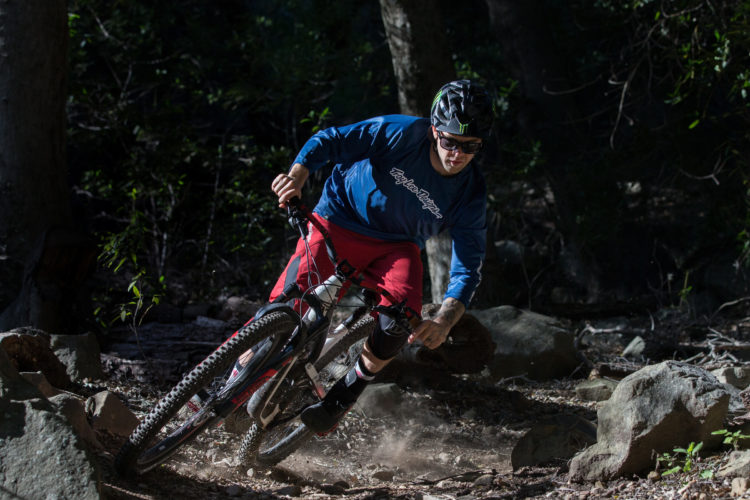
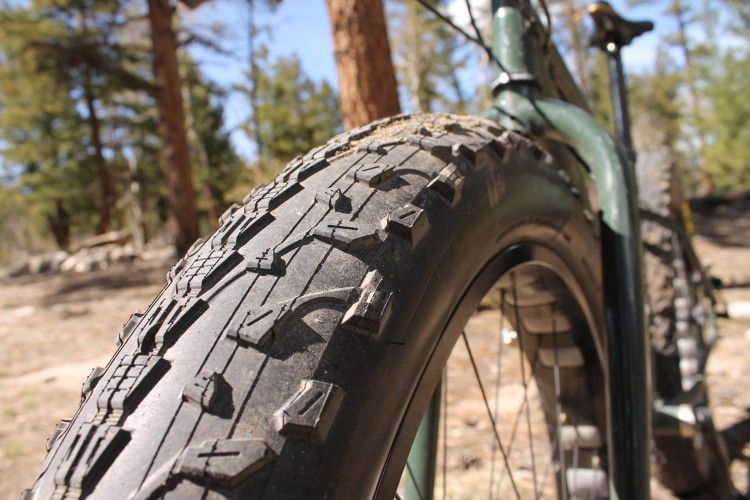
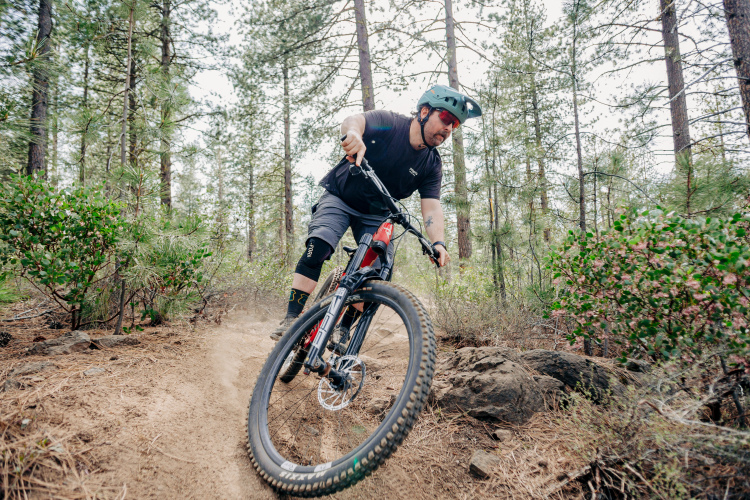
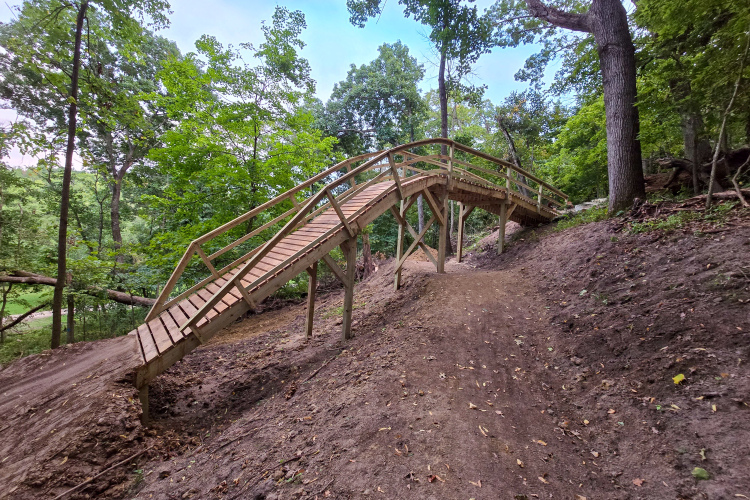
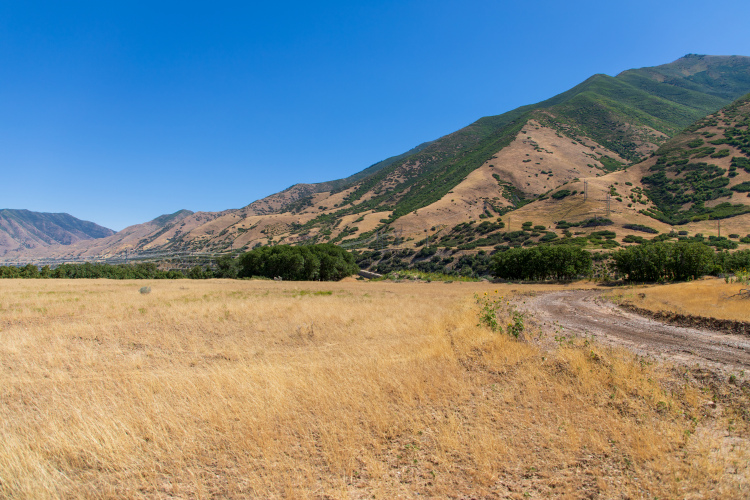
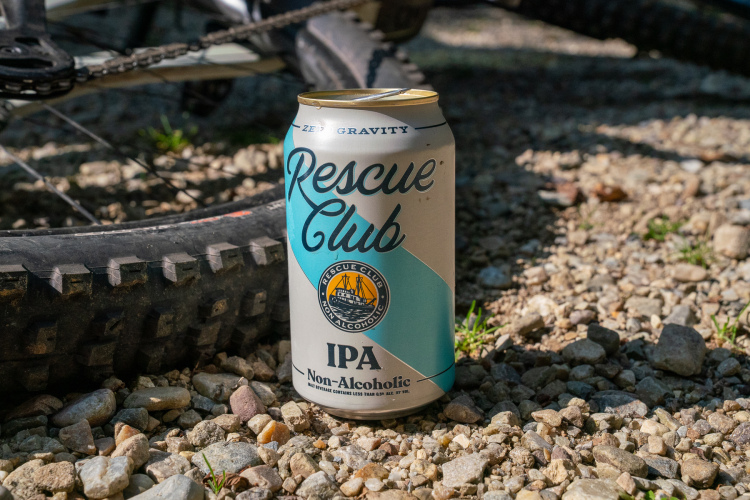

6 Comments
Jan 7, 2021
Jan 7, 2021
Jan 6, 2021
Think that I was reading this just before https://en.wikipedia.org/wiki/Viscoelasticity
because I was trying to get a grasp about tire inserts behaviour.
Now I understand that I may just have wasted 15€ to order a durometer for tires on aliexpress 😂 (these days I'm thinking about which tires to buy).
I was sorry because companies often don't declare the rubber's shore hardness, but now I'm looking for viscoelasticity 🤦🏻♂️.
Anyway, it confirms that I have the thankless task of looking for tires that, although they have an aggressive profile, have a carcass and viscoelasticity adequate for my light weight and driving style. I'm thinking of the Teravail Honcho tested by Jeff a year ago. But also Specialized tires may be an option 🤔.
Jan 7, 2021
Briefly: enjoyed the article's depth, & though 99% of analogies drive me crazy, prepping & serving spaghettis seems to be a nice intro to polymers prep (IMO). The article also helped dampen my reluctance to shop 4 new tires (been receiving my colleague's worn Continental Trail Kings since beginning MTB'n in 2013, @ age 35 on a '98 Rockhopper).
Jan 12, 2021
Out of interest how many people regularly switch tires? Is it a pain/mess if you're running tubeless?
Jan 7, 2021